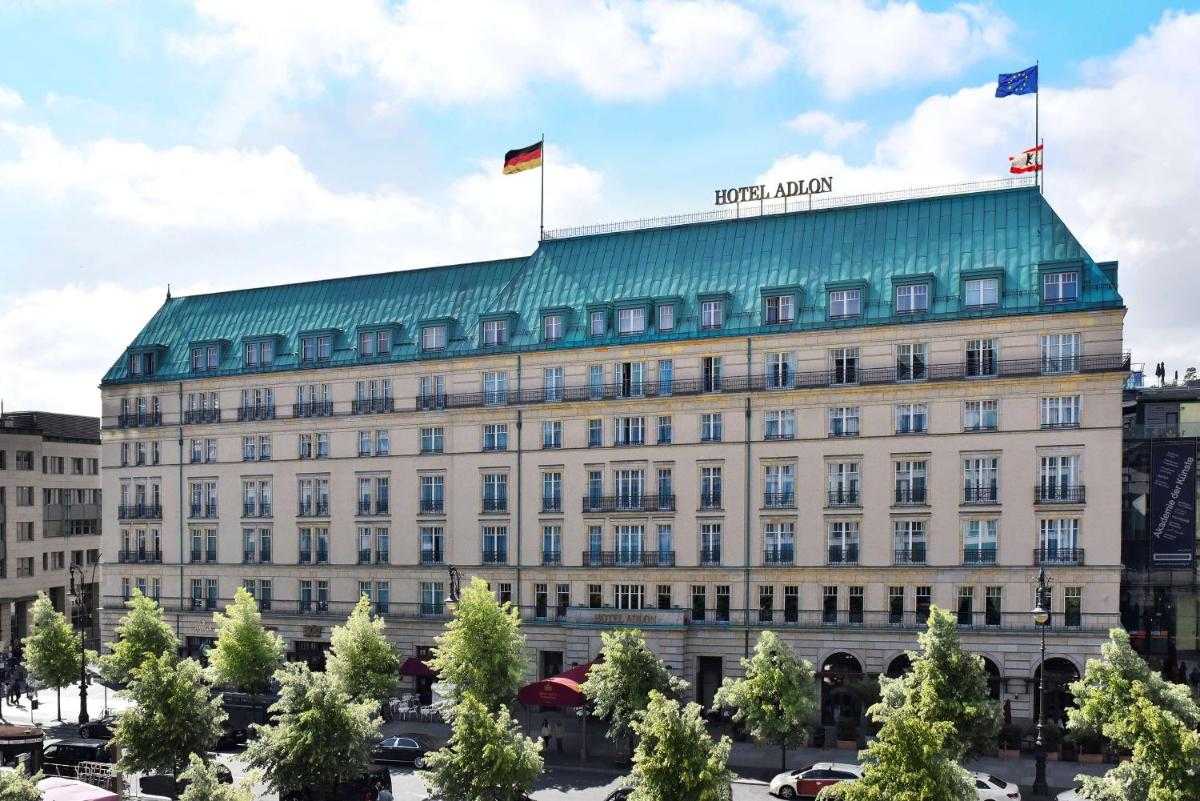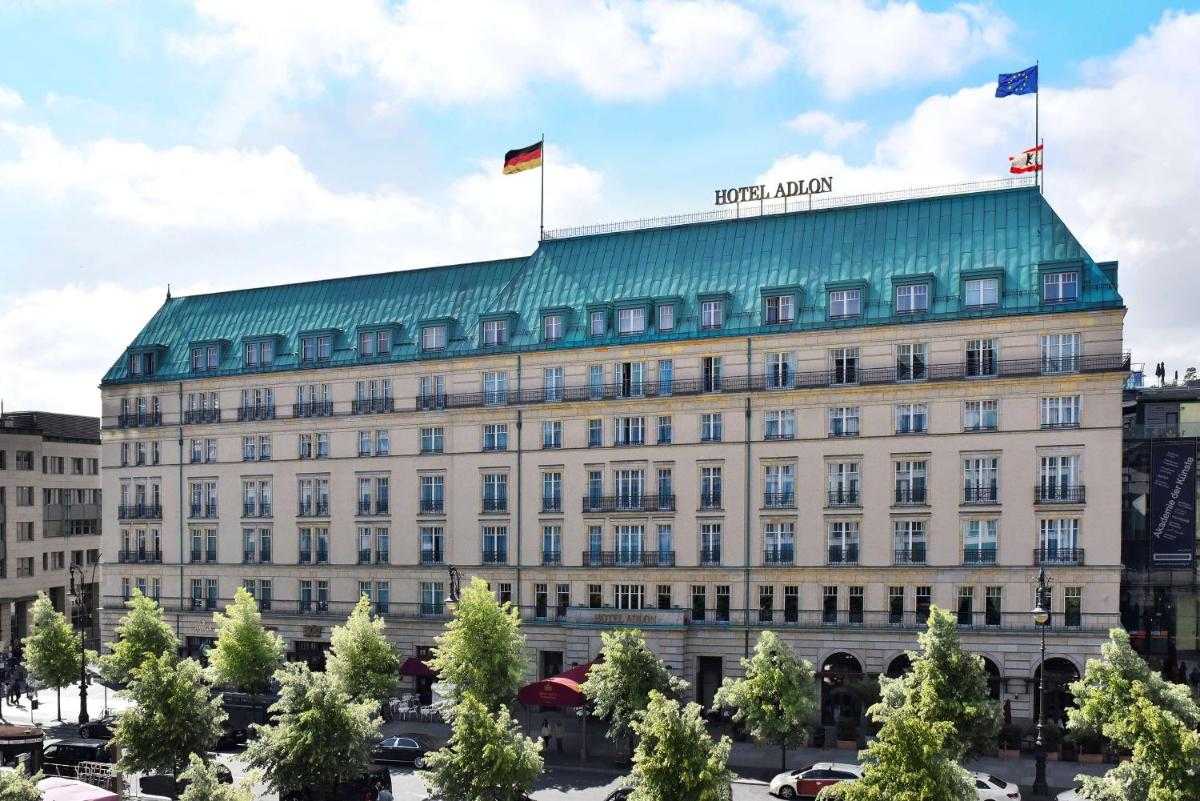
Berlin, a city steeped in history, pulsating with vibrant culture, and brimming with an energy that’s both invigorating and reflective, is a must-visit destination. From its dramatic past as the heart of empires and the epicenter of Cold War division to its present-day status as a global hub for art, music, and innovation, Berlin offers a multifaceted experience unlike any other. This comprehensive guide will navigate you through the best hotels in Berlin, unveiling its rich history, highlighting its main attractions, providing essential travel tips, suggesting the optimal time to visit, recommending nearby accommodation options, exploring the delectable local food scene, and outlining the city’s efficient transportation network.
A Glimpse into Berlin’s Past: From Prussian Glory to Modern Metropolis
Berlin’s story is a compelling tapestry woven with threads of triumph, tragedy, and resilience. Its history is visible on every corner, whispering tales of kings, emperors, and revolutionaries.
Related Articles about Berlin: A Journey Through History and Hospitality – Top Hotels and Travel Guide:
- Portugal: A Tapestry of Sun, Sea, and Centuries of Stories
- Rome’s Eternal Charm: A Connoisseur’s Guide to Top Hotels and the City They Adorn
- The Grand Tapestry of America: A Journey Through Its Top Experiences
- Laos: A Symphony of Serenity, Spirituality, and Untamed Beauty
- India: A Tapestry of Time, Taste, and Wonder – Your Comprehensive Travel Guide
-
The Prussian Era (17th – 19th Centuries): Berlin rose to prominence as the capital of the Kingdom of Prussia, a powerful military and political force. The Brandenburg Gate, commissioned by King Frederick William II, became a symbol of Prussian power and ambition. Palaces like Charlottenburg Palace and Sanssouci Palace (in nearby Potsdam) showcase the grandeur of the era.
-
The German Empire (1871-1918): After unifying Germany, Berlin became the capital of the German Empire, witnessing rapid industrialization and cultural flourishing. The Reichstag Building, home to the German parliament, was constructed during this period, symbolizing the burgeoning democracy.
-
The Weimar Republic (1919-1933): Following World War I, Berlin experienced a period of artistic and intellectual ferment, known as the Weimar Republic. This era saw the rise of avant-garde movements in art, cinema, and architecture. However, economic instability and political turmoil ultimately led to the rise of the Nazi party.
-
The Nazi Regime and World War II (1933-1945): Berlin became the capital of Nazi Germany, leading to the persecution of minorities and the horrors of the Holocaust. The city was heavily bombed during World War II, leaving much of it in ruins.
-
The Cold War and the Divided City (1945-1989): After the war, Berlin was divided into East and West Berlin, separated by the infamous Berlin Wall. This wall became a stark symbol of the Cold War and the division of Europe.
-
The Fall of the Wall and Reunification (1989-1990): The fall of the Berlin Wall in 1989 marked a pivotal moment in history, leading to the reunification of Germany in 1990. Berlin, once again the capital, embarked on a period of rebuilding and renewal.
-
Modern Berlin: Today, Berlin is a vibrant, cosmopolitan city that embraces its past while looking towards the future. It is a center for art, culture, and innovation, attracting visitors from all over the world.
Main Attractions: A Journey Through Berlin’s Icons
Berlin’s attractions are as diverse as its history, offering something for every traveler.
-
The Brandenburg Gate: This iconic neoclassical monument is a symbol of German unity and a must-see for any visitor. It stands at the entrance to Unter den Linden, a grand boulevard lined with embassies, shops, and cultural institutions.
-
The Reichstag Building: Home to the German parliament, the Reichstag Building features a modern glass dome that offers panoramic views of the city. Guided tours are available, allowing visitors to learn about the building’s history and the workings of the German government.
-
The Berlin Wall Memorial: Located on Bernauer Straße, the memorial offers a poignant reminder of the division of Berlin. It includes a preserved section of the wall, a documentation center, and a visitor center that provides information about the history of the wall and its impact on the city.
-
East Side Gallery: This remaining section of the Berlin Wall has been transformed into an open-air art gallery, featuring vibrant murals created by artists from around the world. It serves as a powerful symbol of freedom and artistic expression.
-
Museum Island: A UNESCO World Heritage site, Museum Island is home to five world-renowned museums, including the Pergamon Museum, the Neues Museum (housing the bust of Nefertiti), and the Bode Museum. These museums house a vast collection of art and artifacts from around the world.
-
Memorial to the Murdered Jews of Europe: This somber memorial, also known as the Holocaust Memorial, consists of a field of 2,711 concrete slabs of varying heights. It serves as a powerful reminder of the Holocaust and its victims.
-
Charlottenburg Palace: This magnificent baroque palace, the largest palace in Berlin, offers a glimpse into the opulent lifestyle of Prussian royalty. Its beautifully manicured gardens provide a tranquil escape from the city.
-
Potsdamer Platz: Once a desolate no-man’s land, Potsdamer Platz has been transformed into a modern hub of commerce, entertainment, and architecture. It features impressive skyscrapers, shopping malls, and cultural venues.
-
Checkpoint Charlie: This historic crossing point between East and West Berlin is a reminder of the Cold War division. A replica of the guardhouse and a museum detailing the history of the checkpoint are located here.
Travel Tips: Navigating Berlin with Ease
-
Currency: The currency in Germany is the Euro (€). Credit cards are widely accepted, but it’s always a good idea to have some cash on hand, especially for smaller establishments.
-
Language: German is the official language. However, English is widely spoken, especially in tourist areas. Learning a few basic German phrases will enhance your experience.
-
Getting Around: Berlin has an excellent public transportation system, including the U-Bahn (underground), S-Bahn (overground), trams, and buses. Purchase a day pass or a multi-day ticket for cost-effective travel. Consider the Berlin WelcomeCard for free travel and discounts on attractions.
-
Accommodation: Book your accommodation in advance, especially during peak season. Berlin offers a wide range of hotels, from budget-friendly hostels to luxurious five-star establishments.
-
Safety: Berlin is generally a safe city. However, it’s always wise to be aware of your surroundings and take precautions against petty theft, especially in crowded areas.
-
Tipping: Tipping is customary in restaurants and for other services. A tip of 10-15% is generally appreciated.
-
Weather: Berlin experiences four distinct seasons. Summers (June-August) are warm and sunny, with average temperatures in the low 20s Celsius (70s Fahrenheit). Winters (December-February) are cold, with average temperatures around freezing.
Best Time to Visit: Embracing Berlin’s Seasons
The best time to visit Berlin depends on your preferences:
-
Shoulder Seasons (April-May and September-October): These months offer pleasant weather, fewer crowds, and often lower prices. The city is beautiful in the spring and fall, with blooming flowers and colorful foliage.
-
Summer (June-August): This is the peak tourist season, with warm weather, long daylight hours, and a lively atmosphere. Expect higher prices and more crowds.
-
Winter (December-February): Berlin in winter is magical, with Christmas markets, festive decorations, and a cozy atmosphere. Be prepared for cold temperatures and potential snowfall.
Top Hotels in Berlin: Where to Rest Your Head
Berlin boasts a diverse range of hotels, catering to every budget and preference. Here are some of the top hotels in the city, offering a blend of luxury, comfort, and prime locations:
-
Hotel Adlon Kempinski Berlin: A legendary hotel located near the Brandenburg Gate, offering unparalleled luxury, impeccable service, and a rich history. Famous for its opulent interiors and celebrity clientele.
-
The Ritz-Carlton, Berlin: Situated on Potsdamer Platz, this hotel offers stunning views, elegant rooms, and exceptional dining experiences.
-
Grand Hyatt Berlin: Located on Potsdamer Platz, this modern hotel features stylish rooms, a rooftop terrace, and a spa.
-
Hotel de Rome, a Rocco Forte Hotel: Housed in a former bank building, this luxurious hotel offers a blend of historic charm and contemporary design.
-
Das Stue: A stylish hotel located in the Tiergarten park, offering a tranquil escape from the city bustle.
-
25hours Hotel Bikini Berlin: A trendy hotel with a unique design, located in the Bikini Berlin shopping complex, offering stunning views of the Berlin Zoo.
-
Michelberger Hotel: A hip and stylish hotel in the trendy Friedrichshain district, known for its creative atmosphere and social spaces.
Nearby Hotels: Expanding Your Options
If you’re looking for alternatives, consider these hotels located near popular attractions:
-
Near the Brandenburg Gate: The Regent Berlin, Hotel de Rome (mentioned above), and the Hilton Berlin.
-
Near Museum Island: The Radisson Collection Hotel, Berlin; and the Titanic Gendarmenmarkt Berlin.
-
Near Potsdamer Platz: The Grand Hyatt Berlin (mentioned above), the Ritz-Carlton, Berlin (mentioned above), and the Mandala Hotel.
Local Food: A Culinary Adventure
Berlin’s culinary scene is as diverse as its population, offering a wide range of flavors and experiences.
-
Currywurst: A Berlin staple, this dish consists of sausage (usually pork) sliced and topped with a curried ketchup and often served with fries.
-
Döner Kebab: A popular street food, Döner Kebab is a Turkish-German creation featuring grilled meat (usually lamb or chicken) served in a pita bread with fresh vegetables and sauces.
-
Schnitzel: A classic German dish, Schnitzel is a thin, breaded, and fried cutlet of meat (usually pork or veal).
-
Pretzels: These soft, baked bread twists are a popular snack in Germany, often served with butter or mustard.
-
Berlin Cuisine: Look for traditional Berlin dishes like Eisbein (braised pork knuckle), Königsberger Klopse (meatballs in a white sauce), and Kartoffelsalat (potato salad).
-
International Cuisine: Berlin boasts a vibrant international food scene, with options ranging from Vietnamese pho to Italian pasta.
Transportation: Navigating the City with Ease
Berlin has an excellent public transportation system that makes it easy to get around:
-
U-Bahn (Underground): The U-Bahn is the fastest way to travel between different parts of the city.
-
S-Bahn (Overground): The S-Bahn connects the city center with the surrounding suburbs.
-
Trams: Trams operate primarily in the eastern part of Berlin.
-
Buses: Buses provide an extensive network, connecting areas not served by the U-Bahn or S-Bahn.
-
Taxis: Taxis are readily available, but can be more expensive than public transport.
-
Cycling: Berlin is a bike-friendly city, with numerous bike paths and rental options.
Conclusion: A City That Will Captivate You
Berlin is a city that will captivate you with its history, its culture, and its energy. From its iconic landmarks to its vibrant street art, from its delicious cuisine to its excellent transportation system, Berlin offers a rich and rewarding travel experience. Whether you’re interested in history, art, culture, or simply enjoying the atmosphere of a dynamic city, Berlin is a destination that will leave a lasting impression. Plan your trip, book your hotel, and prepare to be amazed by the spirit and resilience of this remarkable city.








